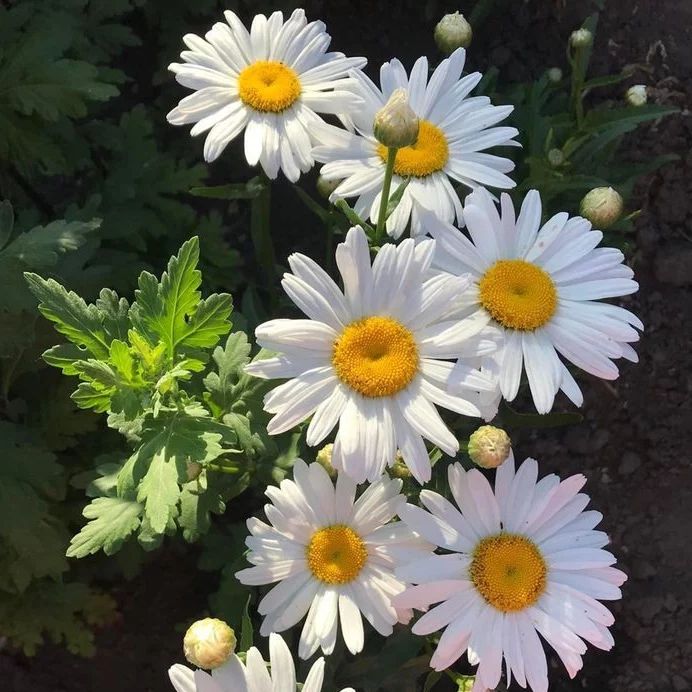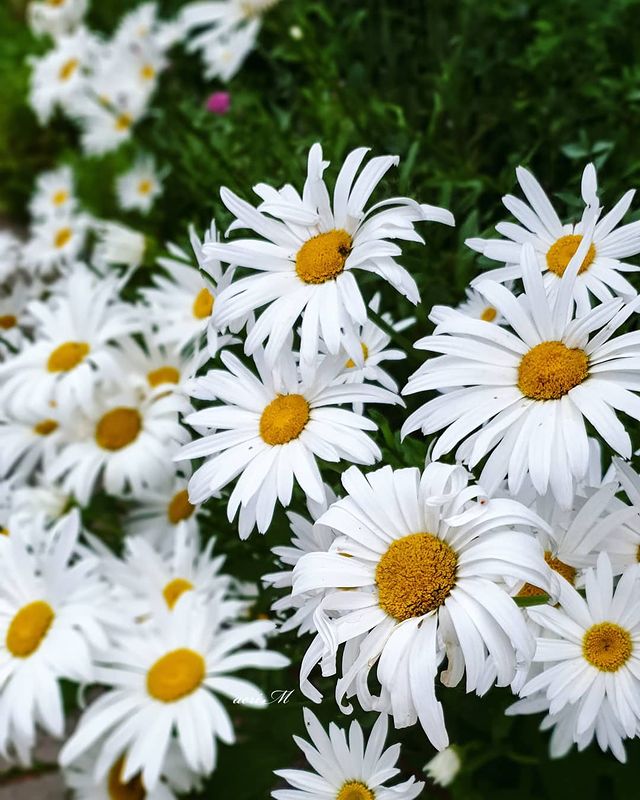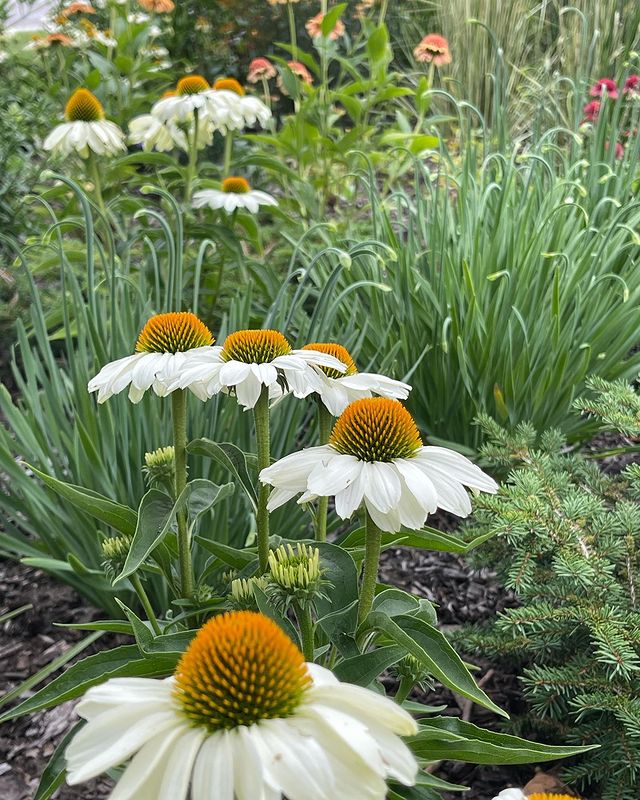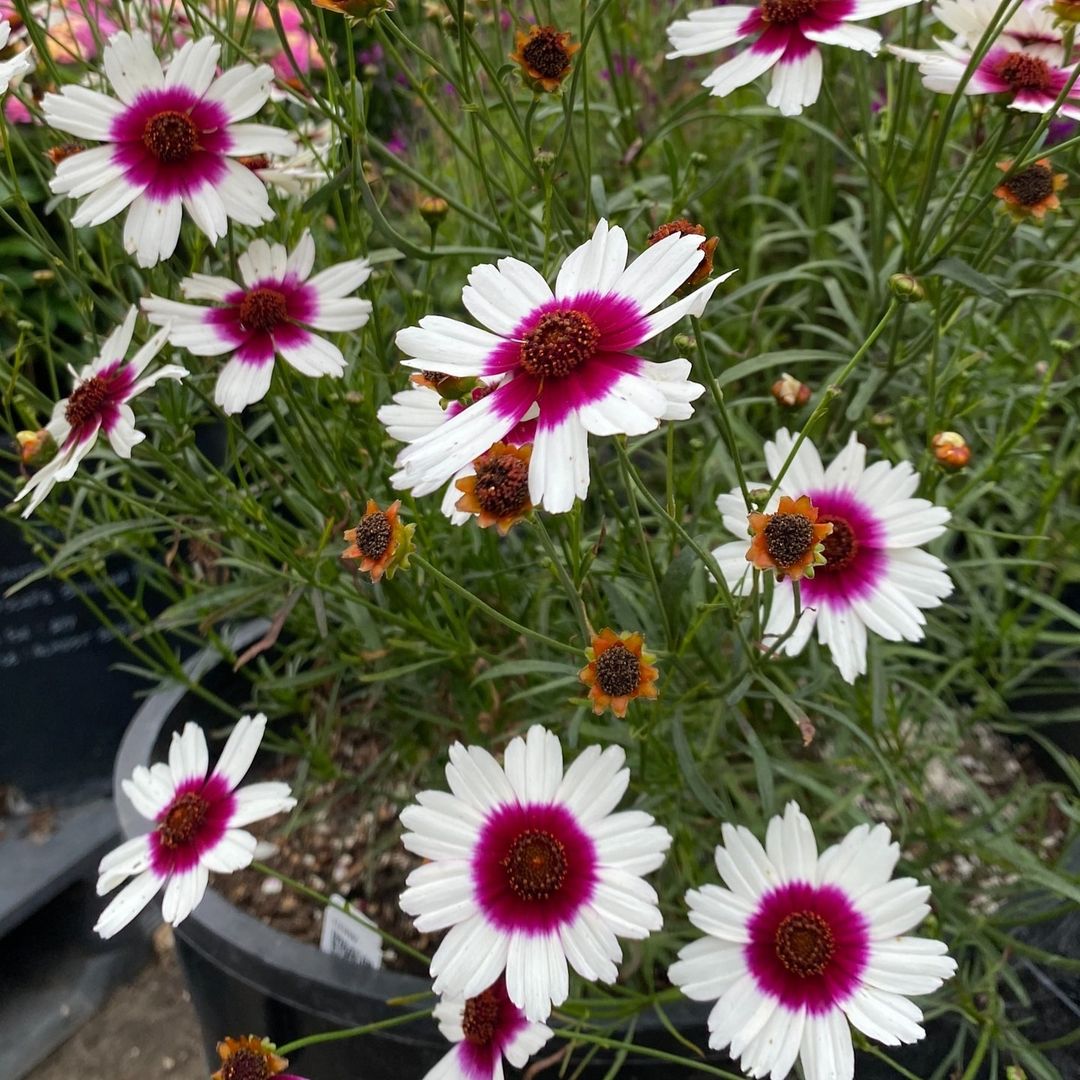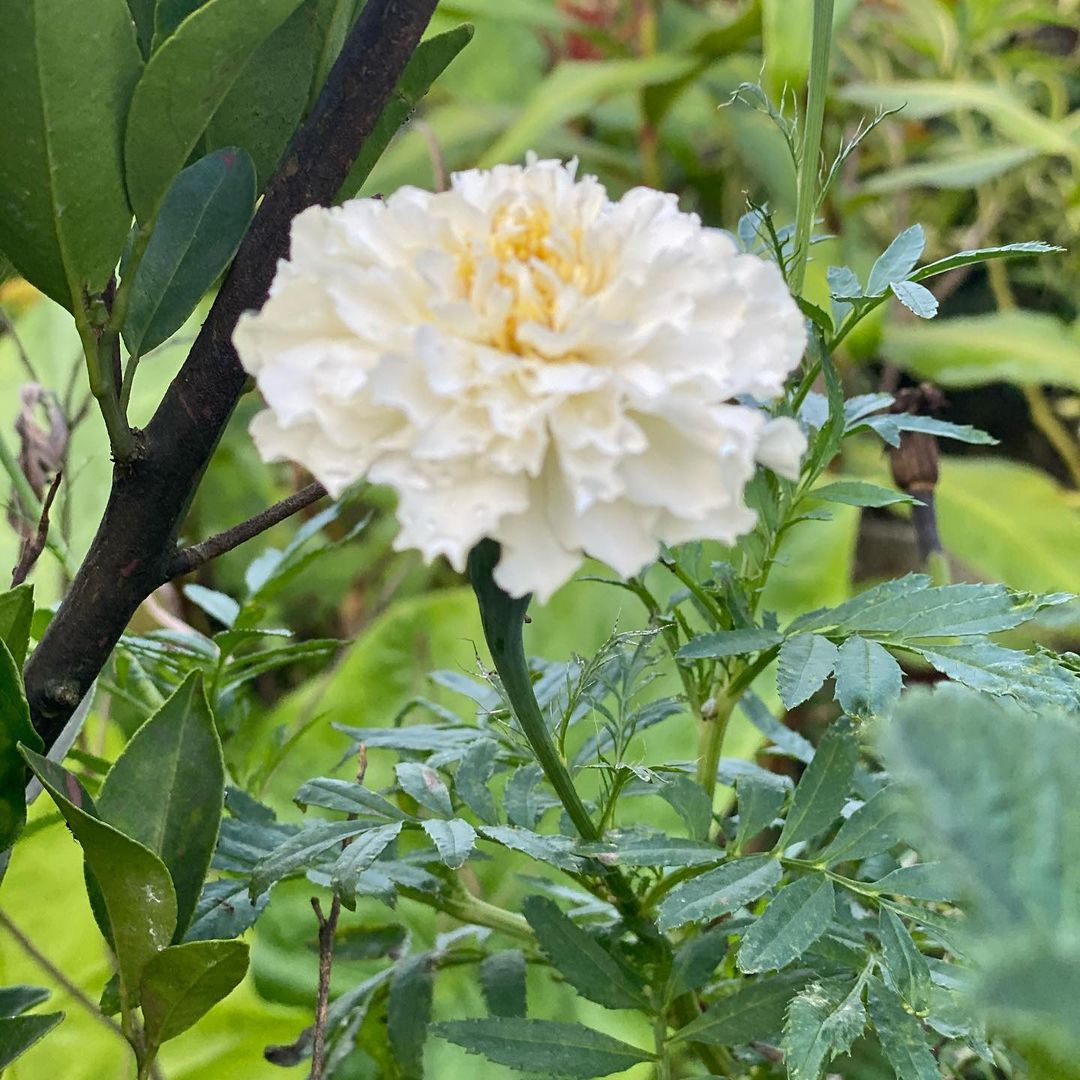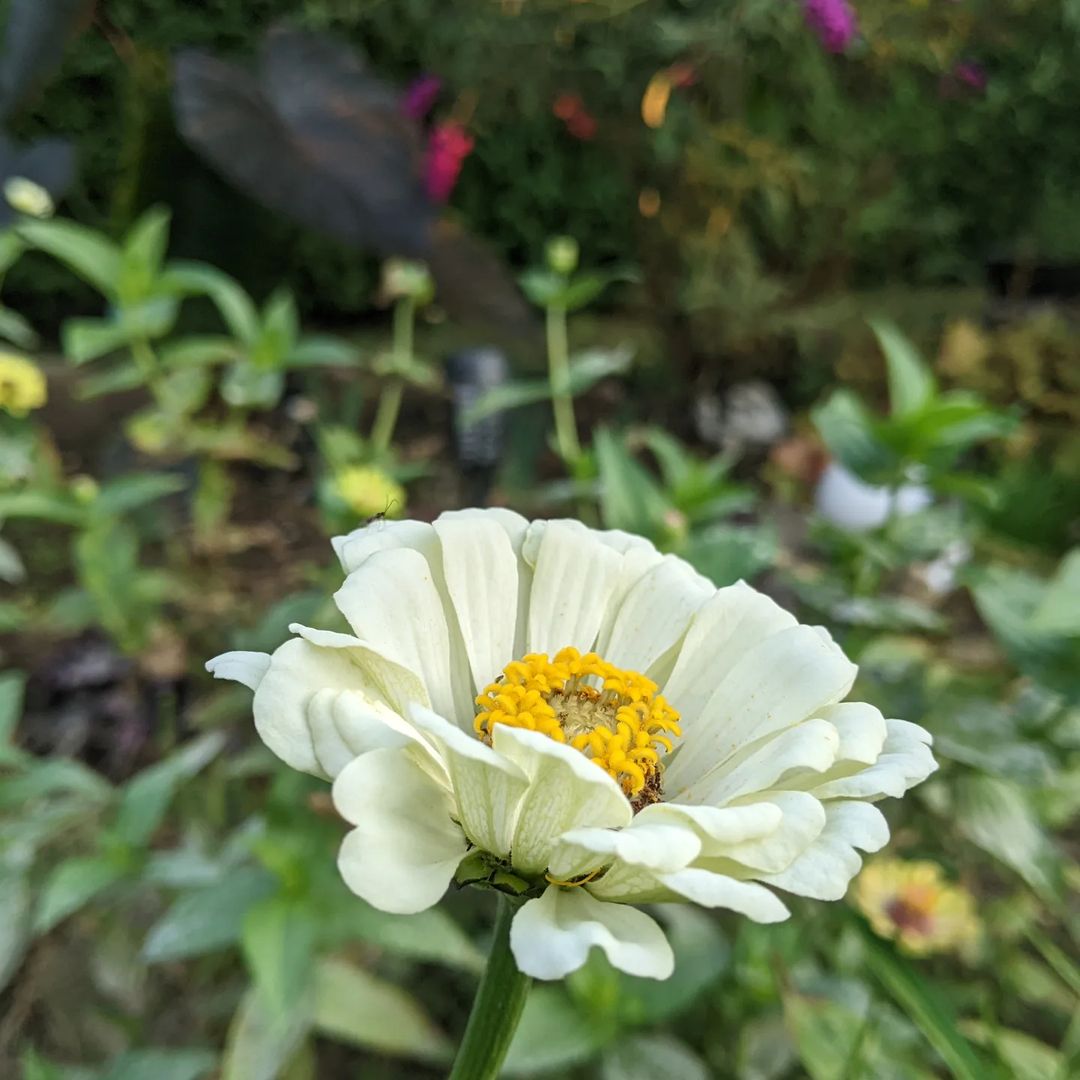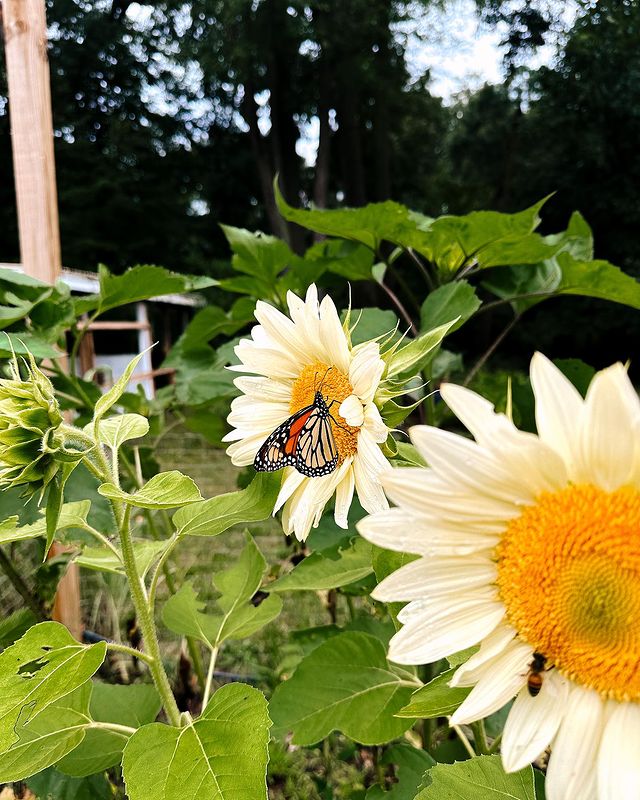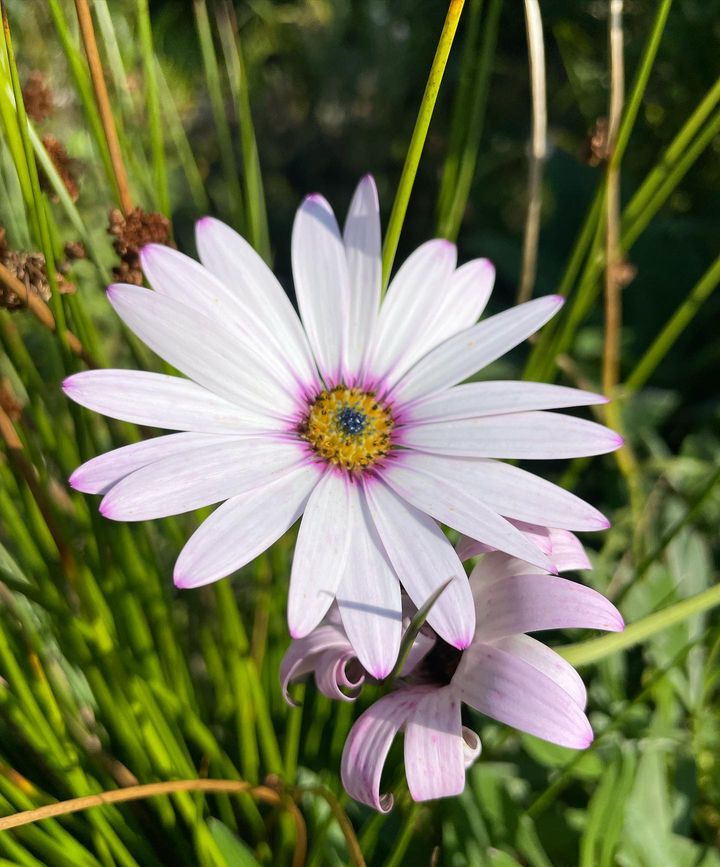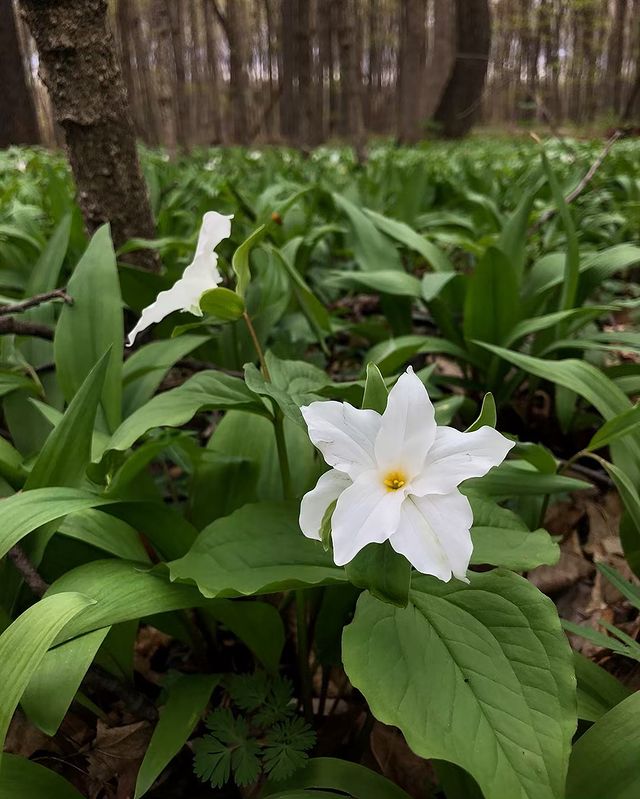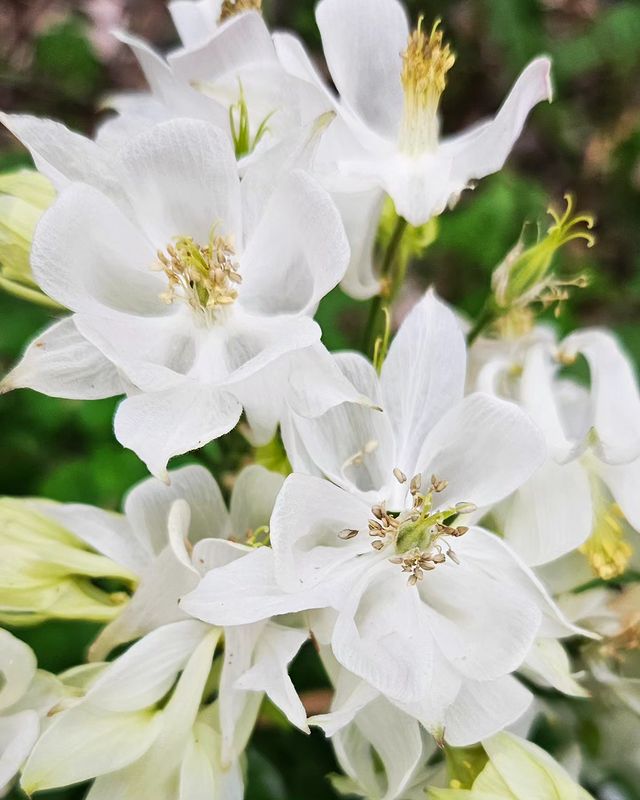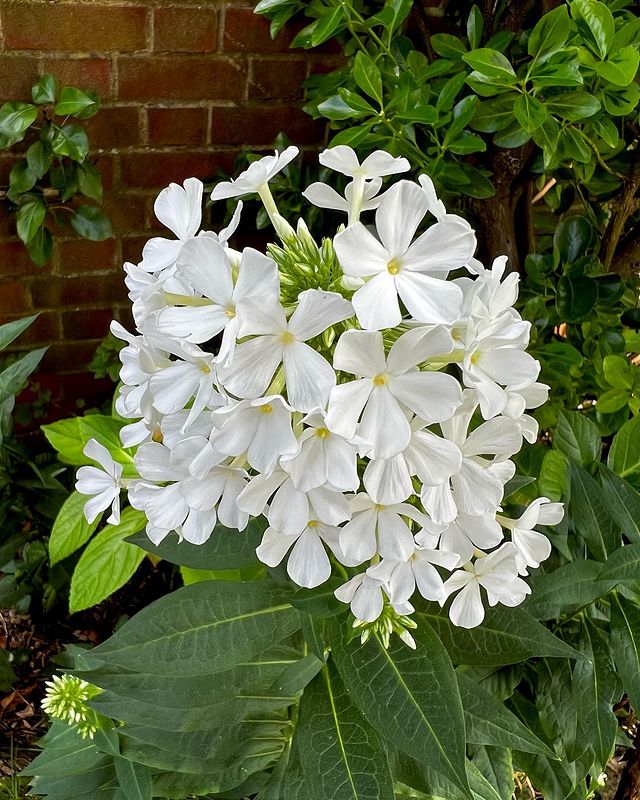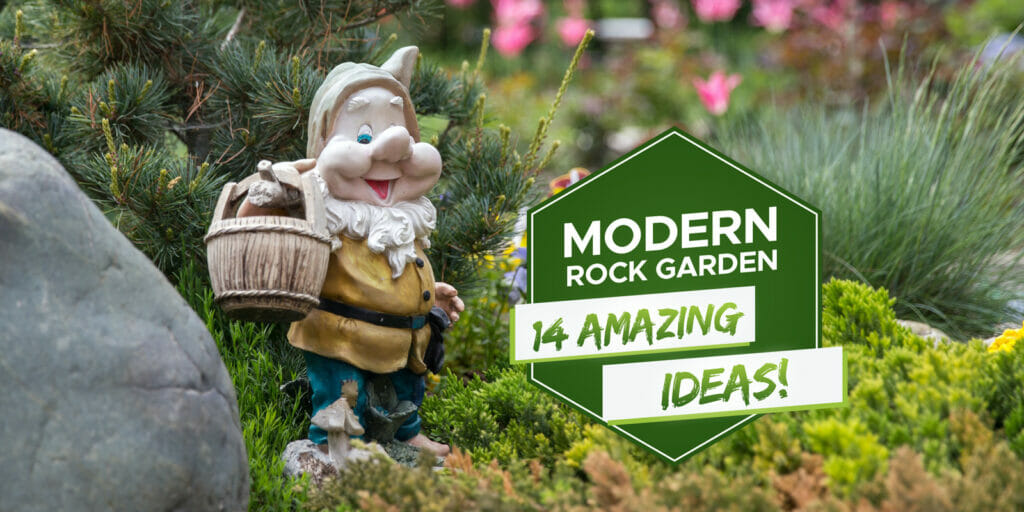White flowers with yellow centers are a stunning addition to any garden or floral arrangement. The combination of white and yellow creates a bright and cheerful contrast that can brighten up any space. There are many different types of white flowers with yellow centers, from small and delicate to large and showy.
One example of a beautiful white flower with a yellow center is the English Daisy.
This herbaceous perennial boasts showy white flowers with a bright yellow center.
It prefers cool temperatures and moist, fertile soil. Another option is the Japanese Anemone, which features large star-shaped petals in a bright white color with a yellow center.
These flowers can be a great choice for those looking for a more dramatic statement piece in their garden or floral arrangements.
Botanical Characteristics
White flowers with yellow centers are known for their attractive appearance and unique characteristics. As a botanist, I have observed the following features of these flowers:
The petals of white flowers with yellow centers are usually flat and arranged in a circular pattern around the center. They are often thin and delicate, with a smooth and glossy texture.
The petals come in different shapes and sizes, depending on the species of the flower. Some petals are long and pointed, while others are short and rounded.
Stamen and Pistil Details
The stamen and pistil of white flowers with yellow centers are the reproductive organs of the plant. The stamen is the male reproductive organ, which produces pollen.
The pistil is the female reproductive organ, which contains the ovary and the stigma. The stigma is the part of the pistil that receives the pollen during fertilization.
The yellow center of the white flower is made up of the stamen and pistil. The stamen is usually a bright yellow color, while the pistil is a pale yellow color. The stamen is composed of the filament and the anther. The filament is a thin stalk that supports the anther, which is the part of the stamen that produces the pollen.
The anther is usually a bright yellow color and has a powdery texture.
17 White Flowers with Yellow Centers
When it comes to white flowers with yellow centers, there are several popular varieties worth exploring.
Here are some of my favorites!
Daisy (Leucanthemum)
Daisies are timeless and beloved flowers that can be a wonderful addition to any garden.
The white daisy with a bright yellow center, scientifically known as Leucanthemum, is an especially attractive choice among the various daisy varieties available.
- Scientific Name: Leucanthemum, the genus to which the classic daisy belongs, translates to “white flower,” reflecting its distinctive white petals.
- Hardiness Level: Daisies, including the Leucanthemum species, are known for their hardiness. They can thrive in USDA hardiness zones 4 to 9, making them suitable for a wide range of climates and growing conditions.
- Versatile Color Palette: While the classic white daisy with a yellow center is iconic, daisies come in an array of colors and sizes. Varieties include those with shades of pink, red, and purple centers, allowing for diverse garden designs.
- Diverse Sizes: Daisy varieties range in size from compact, low-growing plants to tall, towering ones. This variety in height provides options for different garden layouts, from ground cover to tall border plants.
Chamomile (Matricaria)
Chamomile is a charming and versatile herb that can be a delightful addition to any garden.
Known for its dainty, daisy-like flowers, chamomile belongs to the Matricaria genus.
- Scientific Name: Chamomile belongs to the Matricaria genus, and there are two primary species used in gardening: Matricaria chamomilla (German chamomile) and Matricaria recutita (Roman chamomile).
- Hardiness Level: Chamomile, especially Roman chamomile (Matricaria recutita), is known for its adaptability and hardiness. It can thrive in a wide range of climates and soil types, making it a versatile choice for gardeners.
- Daisy-Like Flowers: The flowers of chamomile closely resemble classic daisies. They have white petals and a bright yellow central disk, creating a similar appearance to the white daisy with a yellow center.
- Compact Growth: Chamomile plants typically have a low, spreading growth habit, forming a lush carpet of foliage and flowers. This makes them suitable for ground cover in garden beds or between stepping stones.
Anemone
Anemones are elegant and captivating flowering plants that can enhance the beauty of any garden.
These plants belong to the Anemone genus and offer a variety of species and cultivars with unique features.
- Scientific Name: Anemones belong to the Anemone genus, which includes several species commonly grown in gardens, such as Anemone coronaria (poppy anemone) and Anemone nemorosa (wood anemone).
- Hardiness Level: Anemones vary in their hardiness depending on the species and cultivar. Some are suitable for different climate zones, making them adaptable to various garden environments.
- Diverse Flower Forms: Anemones offer a wide range of flower forms, including single, semi-double, and double blooms. This diversity allows gardeners to choose the appearance that best complements their garden design.
- Rich Color Palette: Anemones are available in an array of colors, including shades of white, pink, purple, and blue. The vibrant colors add visual interest and contrast to garden beds.
- Bloom Seasons: Depending on the species and variety, anemones can bloom in spring, summer, or fall. Some, like Anemone coronaria, are known for their early spring blossoms.
Shasta Daisy (Leucanthemum x superbum)
Shasta daisies are classic and enduring perennial flowers that are widely cherished for their timeless beauty.
They are a hybrid of several daisy species and are scientifically known as Leucanthemum x superbum.
- Scientific Name: Shasta daisies belong to the Leucanthemum genus and are a hybrid of various daisy species. Their botanical name, Leucanthemum x superbum, reflects their remarkable appearance.
- Hardiness Level: Shasta daisies are known for their hardiness and adaptability. They can thrive in USDA hardiness zones 4 to 9, making them suitable for a wide range of climates and growing conditions.
- Classic Appearance: Shasta daisies are instantly recognizable by their large, white, petal-like rays surrounding a prominent yellow center. This classic daisy look has made them a garden favorite for generations.
- Long-Blooming: Shasta daisies have an extended blooming period, typically from late spring to early fall. Their abundant flowers provide consistent beauty throughout the growing season.
White Coneflower (Echinacea purpurea ‘White Swan’)
White coneflower, scientifically known as Echinacea purpurea ‘White Swan,’ is a stunning and distinctive perennial flower that adds a touch of elegance to garden landscapes.
- Scientific Name: White coneflowers belong to the Echinacea genus and are a specific cultivar known as ‘White Swan.’ This cultivar is prized for its unique white petals and golden central cones.
- Hardiness Level: White coneflowers are known for their hardiness and adaptability. They can thrive in USDA hardiness zones 3 to 9, making them suitable for a wide range of climates and growing conditions.
- Striking Appearance: The ‘White Swan’ cultivar stands out with its striking white petals that surround a prominent, cone-shaped center in a rich, golden yellow. This color combination creates a mesmerizing visual contrast.
- Extended Blooming Period: White coneflowers typically have a long blooming season, beginning in early to mid-summer and lasting into early fall. Their extended flowering period provides continuous beauty.
Coreopsis (Coreopsis spp.)
Coreopsis, commonly known as “tickseed,” is a delightful and easy-to-grow perennial flower that adds cheerful color and charm to gardens and landscapes.
Coreopsis belongs to the Coreopsis genus, which includes numerous species and cultivars.
- Scientific Name: Coreopsis is the genus name, and it encompasses a wide variety of species and cultivars. Some popular species include Coreopsis lanceolata, Coreopsis grandiflora, and Coreopsis verticillata.
- Hardiness Level: Coreopsis is known for its hardiness and adaptability. Various species and cultivars can thrive in different USDA hardiness zones, making them suitable for a range of climates and growing conditions.
- Daisy-Like Blooms: Coreopsis features charming, daisy-like flowers with bright and cheerful petals. These petals come in various colors, including shades of yellow, orange, red, and pink, with a prominent central disk.
- Long Blooming Season: Coreopsis typically has a long blooming season, starting in late spring or early summer and lasting well into fall. This extended flowering period ensures a continuous display of color.
White Marigold (Tagetes patula ‘Snowdrift’)
White marigold, scientifically known as Tagetes patula ‘Snowdrift,’ is a unique and elegant variation of the classic marigold known for its vibrant and cheerful blooms.
- Scientific Name: White marigold belongs to the Tagetes genus, with the ‘Snowdrift’ cultivar being specifically known for its white petals.
- Hardiness Level: Marigolds, including white varieties like ‘Snowdrift,’ are known for their hardiness and adaptability. They can thrive in various USDA hardiness zones, making them suitable for a wide range of climates and growing conditions.
- Striking Appearance: ‘Snowdrift’ marigolds are distinctive for their pure white petals, which set them apart from the more common orange and yellow marigold varieties. They have a classic daisy-like shape with a prominent central disk.
- Extended Blooming Season: White marigolds typically have a long blooming season, starting in late spring and continuing throughout the summer and into early fall. This extended flowering period ensures a continuous display of white blooms.
White Zinnia (Zinnia elegans)
White zinnia, scientifically known as Zinnia elegans, is a classic and versatile annual flower known for its charming, daisy-like blooms.
- Scientific Name: White zinnias belong to the Zinnia genus, with Zinnia elegans being the species known for its broad range of colors, including white varieties.
- Annual Growth: White zinnias are annuals, meaning they complete their life cycle in one growing season. However, they are prolific bloomers and provide a continuous display of flowers throughout the season.
- Hardiness Level: Zinnias, including white varieties, are generally easy to grow and adaptable to various climates and soil conditions, making them suitable for many garden environments.
- Daisy-Like Blooms: White zinnias feature daisy-like, single or double flowers with white petals. These blooms are characterized by their bright, pristine appearance.
White Sunflower (Helianthus annuus ‘Italian White’)
White sunflowers, specifically the ‘Italian White’ variety, are a unique and eye-catching twist on the classic sunflower known for its sunny disposition.
- Scientific Name: White sunflowers belong to the Helianthus annuus species, with the ‘Italian White’ cultivar being specifically bred for its white petals.
- Annual Growth: White sunflowers are typically annuals, meaning they complete their life cycle in one growing season. However, they are prolific bloomers and provide a continuous display of flowers throughout the season.
- Hardiness Level: Sunflowers, including white varieties like ‘Italian White,’ are generally easy to grow and adaptable to various climates and soil conditions, making them suitable for many garden environments.
- Unique Petal Color: ‘Italian White’ sunflowers are distinct for their pure white petals, a striking departure from the traditional yellow or orange hues associated with sunflowers. This unique color adds elegance to the garden.
- Classic Sunflower Appearance: Despite the white petals, ‘Italian White’ sunflowers retain the classic sunflower structure with a prominent central disk.
White Gerbera Daisy (Gerbera jamesonii)
White Gerbera daisies, scientifically known as Gerbera jamesonii, are exquisite and vibrant perennial flowers cherished for their captivating appearance and long-lasting blooms.
- Scientific Name: White Gerbera daisies belong to the Gerbera genus, with Gerbera jamesonii being the species renowned for its wide range of colorful varieties, including white.
- Perennial Growth: While Gerbera daisies are perennials in their native habitat, they are often grown as annuals in many regions with colder winters. However, they can thrive as perennials in USDA hardiness zones 8 to 11.
- Hardiness Level: White Gerbera daisies are known for their tender nature, requiring protection from frost and cold temperatures. In warmer climates, they can be grown year-round with care.
- Daisy-Like Blooms: White Gerbera daisies feature large, daisy-like flowers with pristine white petals surrounding a prominent central disk. This classic daisy appearance adds an elegant touch to the garden.
White African Daisy (Osteospermum)
White African daisies, scientifically known as Osteospermum, are stunning and resilient perennial flowers that bring a touch of exotic beauty to gardens and landscapes.
- Scientific Name: White African daisies belong to the Osteospermum genus, which includes various species and cultivars known for their colorful daisy-like flowers.
- Perennial Growth: African daisies are typically grown as perennials in regions with mild winters, but they are often treated as annuals in colder climates.
- Hardiness Level: White African daisies are known for their hardiness and ability to thrive in a range of climates. They are well-suited for USDA hardiness zones 9 to 11.
- Distinctive Petal Color: White African daisies boast large, daisy-like blooms with pristine white petals and contrasting dark centers, creating a striking and elegant appearance.
- Color Variety: While white is a classic and popular color choice, African daisies also come in a variety of other colors, including shades of purple, pink, and orange, allowing for diverse garden designs.
- Extended Blooming Season: White African daisies are renowned for their extended blooming period, which typically spans from late spring to late summer or even into early fall, providing enduring beauty.
White Morning Glory (Ipomoea alba)
White morning glory, scientifically known as Ipomoea alba, is a charming and fast-growing annual vine known for its pristine white blooms and its ability to create a captivating display in gardens and landscapes.
- Scientific Name: White morning glory belongs to the Ipomoea genus, which includes a wide range of morning glory species, each with its unique characteristics. Ipomoea alba is known for its white flowers.
- Annual Growth: White morning glories are annual vines, which means they complete their life cycle in one growing season. They grow vigorously and produce an abundance of flowers during their short life span.
- Hardiness Level: These vines are known for their adaptability and can thrive in various climates and soil conditions, making them suitable for many garden environments.
- Pure White Blooms: White morning glories are celebrated for their large, trumpet-shaped, pure white flowers. These blooms have a serene and elegant appearance.
- Night-Blooming: White morning glories are unique among morning glory species because they are night-blooming, with their flowers opening in the late afternoon or evening and closing in the morning.
White Trillium (Trillium grandiflorum)
White trillium, scientifically known as Trillium grandiflorum, is a graceful and enchanting perennial wildflower native to woodlands of North America.
These delicate white blooms are highly prized for their simple elegance and natural beauty.
- Scientific Name: White trillium belongs to the Trillium genus, which includes various trillium species with distinct characteristics. Trillium grandiflorum, also known as the “large-flowered trillium,” is celebrated for its white flowers.
- Perennial Growth: White trilliums are perennial plants that return year after year, slowly forming colonies over time.
- Hardiness Level: They are known for their preference for shaded woodland environments and are typically hardy in USDA hardiness zones 4 to 8.
- Three-Petaled Blooms: White trilliums are instantly recognizable by their three pure white petals that form a star-like shape. The petals are often translucent and appear delicate.
- Solitary Blooms: Each white trillium plant produces a single, exquisite flower that stands above a whorl of three broad, green leaves, creating a striking contrast.
- Early Spring Blooms: White trilliums are among the early spring bloomers in woodland ecosystems, providing a welcome burst of white color in the understory before the canopy trees fully leaf out.
White Columbine (Aquilegia)
White columbine, scientifically known as Aquilegia, is a charming and dainty perennial wildflower admired for its unique and delicate appearance.
This native North American flower is beloved for its graceful presence in gardens and natural landscapes.
- Scientific Name: White columbines belong to the Aquilegia genus, which encompasses various columbine species and cultivars known for their distinct traits.
- Perennial Growth: White columbines are perennial plants, meaning they return year after year, and they can develop into attractive clumps in the garden.
- Hardiness Level: They are hardy and adaptable to a wide range of climates, typically thriving in USDA hardiness zones 3 to 9, depending on the species and variety.
- Intricate Flowers: White columbines are admired for their unique flower structure, featuring elegant, spurred petals that resemble a cluster of delicate, elongated tubes or horns.
- Diverse Petal Colors: While white columbines are celebrated for their pristine white petals, they are available in various colors, including shades of blue, pink, yellow, and red. Some varieties even exhibit bi-colored or multi-colored blooms.
White Bleeding Heart (Dicentra spectabilis ‘Alba’)
White bleeding heart, scientifically known as Dicentra spectabilis ‘Alba,’ is a captivating and elegant perennial plant admired for its graceful, pendulous white blooms and unique flower shape.
This variety is a delightful departure from the more common pink bleeding hearts.
- Scientific Name: White bleeding heart belongs to the Dicentra genus, with ‘Alba’ being a cultivar known for its white flowers.
- Perennial Growth: White bleeding hearts are perennial plants, returning year after year to grace the garden with their charming presence.
- Hardiness Level: They are known for their hardiness and adaptability, typically thriving in USDA hardiness zones 3 to 9.
- Distinctive Flower Shape: White bleeding hearts are known for their unique flower shape, which resembles dangling, heart-shaped pendants or “bleeding hearts.” The white blooms are pristine and elegant.
- Foliage: The finely divided, fern-like foliage of white bleeding hearts provides an attractive backdrop for the delicate flowers and adds to their overall grace.
- Spring Blooms: These perennials typically bloom in late spring or early summer, adding a touch of sophistication to the garden at a time when many other plants are also in full bloom.
White Phlox (Phlox spp.)
White phlox, scientifically known as Phlox spp., is a delightful and versatile perennial flower appreciated for its profuse clusters of pure white, fragrant blooms.
These garden favorites are known for their vibrant appearance and attractive fragrance.
- Scientific Name: White phlox belongs to the Phlox genus, which includes numerous species and cultivars known for their distinct characteristics. Popular species include Phlox paniculata (garden phlox), Phlox subulata (creeping phlox), and Phlox divaricata (woodland phlox).
- Perennial Growth: White phlox plants are perennials, returning year after year, and they are available in various heights and growth habits to suit different garden spaces.
- Hardiness Level: Phlox plants are known for their hardiness and adaptability, typically thriving in USDA hardiness zones 3 to 9, depending on the species and variety.
- Clustered Blooms: White phlox produces dense clusters of small, star-shaped white flowers, creating a striking and abundant display in the garden.
- Fragrant Flowers: Many white phlox varieties are appreciated for their delightful, sweet fragrance, making them a favorite among gardeners and pollinators alike.
- Extended Blooming Season: Phlox is known for its long blooming season, typically spanning from late spring to early autumn, offering months of continuous white floral beauty.
- Variety of Growth Habits: Different species and cultivars of phlox exhibit various growth habits. Some, like Phlox paniculata, grow in upright clumps, while others, like Phlox subulata, form low, creeping mats. This variety allows for diverse garden designs.
White Pansy (Viola × wittrockiana)
White pansies, scientifically known as Viola × wittrockiana, are beloved and charming annual or perennial flowers celebrated for their delicate appearance and a wide range of white hues.
These dainty blooms are a popular choice for gardens, containers, and window boxes.
- Scientific Name: White pansies belong to the Viola genus, specifically the Viola × wittrockiana hybrid, which combines several Viola species to create the garden pansy.
- Annual or Perennial Growth: Pansies are often grown as cool-season annuals, particularly in regions with hot summers. However, they can behave as short-lived perennials in milder climates.
- Hardiness Level: White pansies are known for their hardiness and cold tolerance, making them ideal for early spring and late fall planting. They are well-suited for USDA hardiness zones 4 to 8.
- Unique Petal Patterns: Pansies are characterized by their distinctive “face” or “whiskered” pattern on the petals, which often features dark lines radiating from the center. White pansies provide a clean and classic canvas for this pattern.
- Wide Range of White Shades: White pansies come in various shades of white, from pure white to creamy or slightly tinted varieties. This diversity allows for creative garden designs.
- Cool-Season Blooms: Pansies are cool-season bloomers, producing an abundance of flowers in spring and sometimes again in the fall, providing early and late-season color.
- Compact Growth: White pansies exhibit a compact growth habit, forming neat mounds of foliage adorned with dainty flowers. They are excellent choices for edging, borders, and containers.
Cultivation and Care
When planting white flowers with yellow centers, it is important to choose a location that receives ample sunlight and has well-draining soil.
These flowers can be planted in garden beds, containers, or even as part of a mixed border.
Before planting, it is important to prepare the soil by adding organic matter such as compost or well-rotted manure. This will help to improve soil fertility and drainage, which is essential for healthy plant growth.
When planting, be sure to space the plants according to their specific requirements. Some varieties may need more space than others, so be sure to read the plant label or do some research beforehand.
Maintenance Tips
Once planted, white flowers with yellow centers require regular maintenance to ensure healthy growth and blooming. This includes watering, fertilizing, and pruning.
Watering should be done regularly, but not excessively. Overwatering can lead to root rot, while under watering can cause the flowers to wilt and die. It is important to water deeply, allowing the water to soak into the soil rather than just wetting the surface.
Fertilizing should be done once a month during the growing season. Use a balanced fertilizer that is specifically formulated for flowering plants.
Pruning should be done as needed to remove dead or damaged stems, as well as to shape the plant. It is important to prune after flowering has finished, as this will encourage new growth and blooming.
By following these planting guidelines and maintenance tips, you can enjoy beautiful white flowers with yellow centers in your garden or landscape.
Uses in Landscaping
White flowers with yellow centers are a great addition to any garden or landscape. They add a pop of color and brightness that can really make a space come alive.
Garden Design
White flowers with yellow centers can be used in a variety of garden designs. They can be used as a focal point in a garden bed or as a border plant. They can also be used to create contrast against darker foliage or other colored flowers. Some white flowers with yellow centers that are great for garden design include:
- English Daisy (Bellis perennis)
- Oxeye Daisy (Leucanthemum vulgare)
- Shasta Daisy (Leucanthemum x superbum)
- Black-eyed Susan (Rudbeckia hirta)
- Coreopsis (Coreopsis grandiflora)
Companion Planting
White flowers with yellow centers can also be used in companion planting. Companion planting is the practice of planting different plants together in order to benefit each other.
Some white flowers with yellow centers that are great for companion planting include:
- Marigolds (Tagetes spp.): Marigolds are great for repelling pests and attracting pollinators. They are also easy to grow and come in a variety of sizes and colors.
- Sunflowers (Helianthus annuus): Sunflowers are great for attracting pollinators and providing shade for other plants. They also add height and drama to a garden.
- Zinnias (Zinnia spp.): Zinnias are great for attracting pollinators and adding color to a garden. They are also easy to grow and come in a variety of sizes and colors.
White flowers with yellow centers are a versatile and beautiful addition to any garden or landscape.
They can be used in a variety of ways, including garden design and companion planting. With so many different varieties to choose from, there is sure to be a white flower with a yellow center that will fit perfectly in your garden.
Frequently Asked Questions:
What is the common name for flowers with white petals and a yellow center?
The common name for flowers with white petals and a yellow center is “white flowers with yellow centers.” These flowers are also referred to as “yellow-eyed” flowers.
Which wildflowers feature white petals surrounding a yellow core?
There are several wildflowers that feature white petals surrounding a yellow core, including the oxeye daisy and black-eyed Susan. These flowers are commonly found in meadows, fields, and along roadsides.
What options are available for white flower bouquets with yellow-centered blooms?
There are many options available for white flower bouquets with yellow-centered blooms. Some popular choices include daisies, sunflowers, and frangipani. These flowers can be arranged in a variety of ways, such as in a vase or as part of a bouquet with other flowers. White and yellow flowers can also be combined with greenery for a fresh and natural look.


